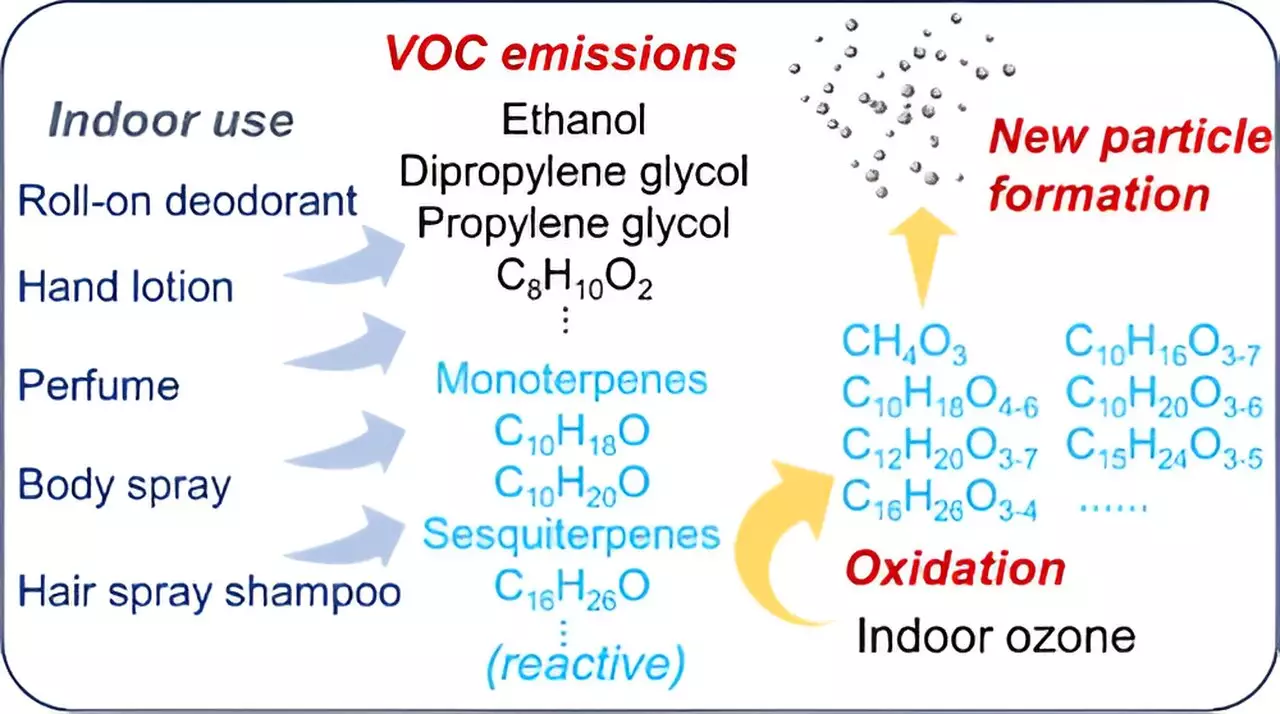In our pursuit of cleanliness and personal hygiene, we often overlook an essential aspect of our daily routines: the air we breathe indoors. Recent findings from researchers at the École Polytechnique Fédérale de Lausanne (EPFL) unveil unsettling truths about the volatile organic compounds (VOCs) emitted from personal care products. This article delves into the implications of these findings, focusing on the intricacies of indoor air quality and its potential impact on our respiratory health.
The investigation, spearheaded by Dusan Licina and his team, aimed to dissect the air quality within indoor environments where personal care products are routinely used. The researchers conducted controlled experiments in environmental chambers designed to replicate regular living spaces. Their shopping list included widely used items such as roll-on deodorant, spray deodorant, hand lotion, perfume, and dry shampoo. A critical aspect of the study was the introduction of ozone into these controlled environments. Ozone, typically an outdoor gas, can easily infiltrate homes and interact with personal care products, leading to unforeseen chemical reactions.
Over a remarkably detailed two-year investigation, the researchers noted that when used in isolation, these products released over 200 different VOCs into the air. While some, like ethanol, are benign at low concentrations, the introduction of ozone catalyzed the creation of new compounds far more dangerous than their individual components. The alarming revelation here is that the mixture of these reactions can lead to the formation of ultrafine particles that pose significant respiratory risks.
VOCs comprise a vast range of chemicals that can easily evaporate at room temperature. Their presence is a growing concern in indoor settings due to their propensity to enter our lungs, where they may cause adverse health effects. When VOCs interact with ozone, particularly in the confined environment of a home, the resulting particles can coalesce into larger, harmful forms. The EPFL study uncovered that concentrations reached levels comparable to those found in heavily polluted urban centers, like downtown Zurich—a distressing comparison for materials typically thought to be safe.
Licina emphasized the inadequacy of current scientific understanding regarding the long-term health effects of regularly inhaling these particulates, particularly since many personal care products are applied close to our breathing zone.
The results of the study usher in a call to action for further exploration into the health risks posed by these ubiquitous household items. While the research did well to highlight the problem, it underscored the lack of comprehensive toxicological studies centered on the health impacts of inhaled VOC-derived particles. This gap in knowledge is unacceptable, especially as many of us use these products daily without any awareness of their potential dangers.
With individuals often experiencing respiratory issues without a clear understanding of their source, it’s imperative to increase public awareness and research on indoor air quality influenced by consumer products.
In light of these findings, there exist practical steps to mitigate the adverse effects of VOCs and ozone in our living spaces. A combination of structural changes and behavioral adjustments could greatly enhance indoor air quality. For instance, improving ventilation when using personal care products could significantly dilute harmful emissions, while air purification devices equipped with activated carbon filters may help trap VOCs more effectively.
Additionally, a reevaluation of our reliance on conventional personal care products is warranted. Consumers might consider gravitating towards natural alternatives that are low in chemical reactivity and contain fewer synthetic compounds.
The new research from EPFL strikes a critical chord in an age where personal care products reign supreme in our beauty routines. It’s a wake-up call to revisit not only the formulations of these products but also the broader implications they have on indoor air quality and our health. By adopting more informed choices and encouraging further scientific inquiry, we can enhance our understanding and safeguard our well-being in pursuit of cleaner, healthier living environments.


Leave a Reply